Bret4207
ArboristSite Guru
28" is an awful long bar for an Super XL in hardwood.

28" is an awful long bar for an Super XL in hardwood.
Yes, 28 would be. Hoping 24 will be workable, maybe with a skip chain as suggested by buzz Sawyer. The 28-in reference was a typo(now corrected). The bar on order is 24-in Oregon with an Oregon full chisel chain. If that is way too much, I can order a Forester or Archer 24-inch skip chain on flea bay(The only 81 link skip chains I have found so far).28 is too much for the Super XL but if you must, at least go to skip tooth chain. Yes, that full chisel cuts great until you hit a little dirt. Keep it touched up.
How's your hearing now? [emoji23]
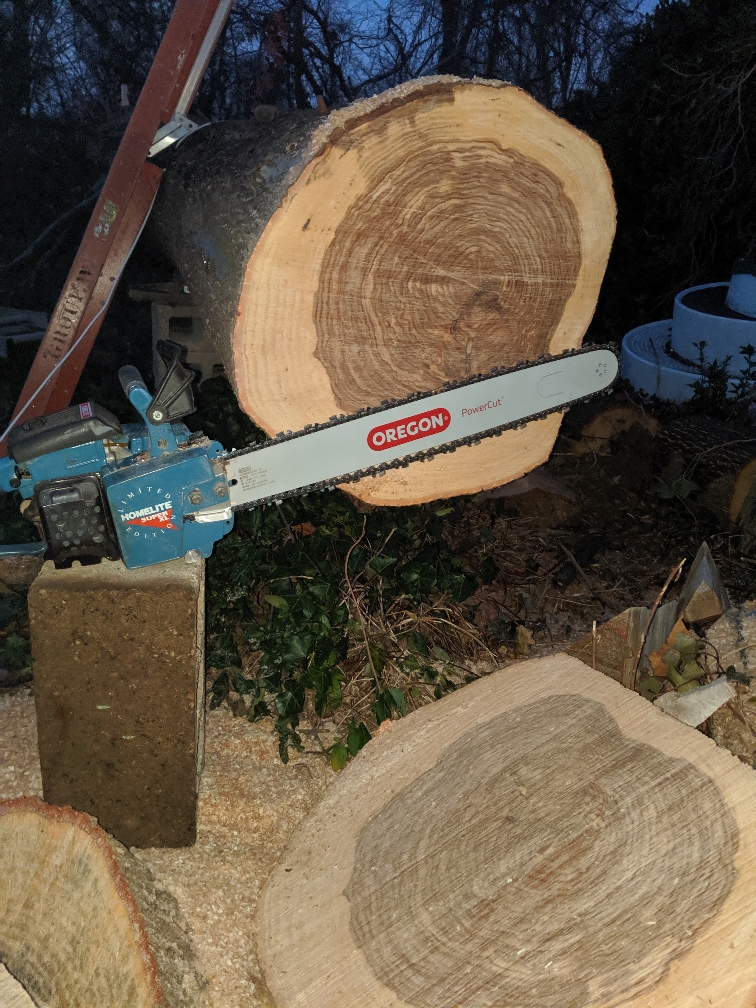
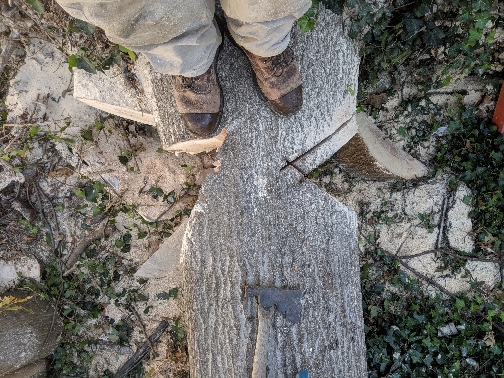
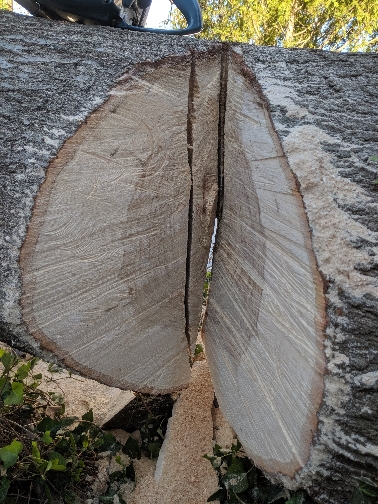
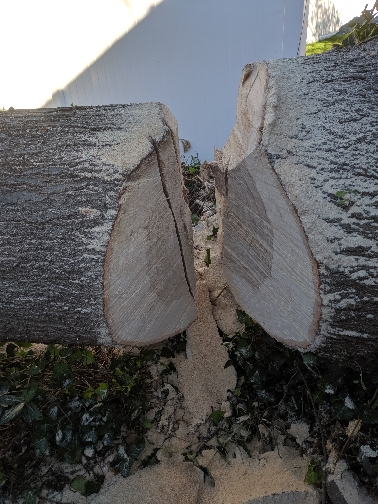









Well that sounds easy, but unfortunately when I would cut real big wood with the 16-in bar and existing chain I had great difficulty making a straight cut. The cuts tend to curve away from the motor side of the saw. So matching that cut on the opposite side of the log would not work.For bucking stuff thicker than the bar is long, try starting at the top and cutting down on the far side. Then finish the cut on the near side.
Well that sounds easy, but unfortunately when I would cut real big wood with the 16-in bar and existing chain I had great difficulty making a straight cut. The cuts tend to curve away from the motor side of the saw. So matching that cut on the opposite side of the log would not work.
That is why I asked questions early in this thread about whether the bar could be worn. I have not tried to make a big deep cut with the 16-in bar and new full chisel chain yet. It may have just been my poor sharpening techniques with the semi-chisel blade I had.
I just discovered that the original Homelite bar is slightly warped. If I lay it on a flat surface the two ends touch the ground but the center has a gap under it. Enough to slide a few small slips of note paper under without binding under the bar. I don't know if that much of a warp is terribly significant, but there is also some slight mushrooming and burrs around the edges that I need to file off.
Sent from my Pixel 3 XL using Tapatalk
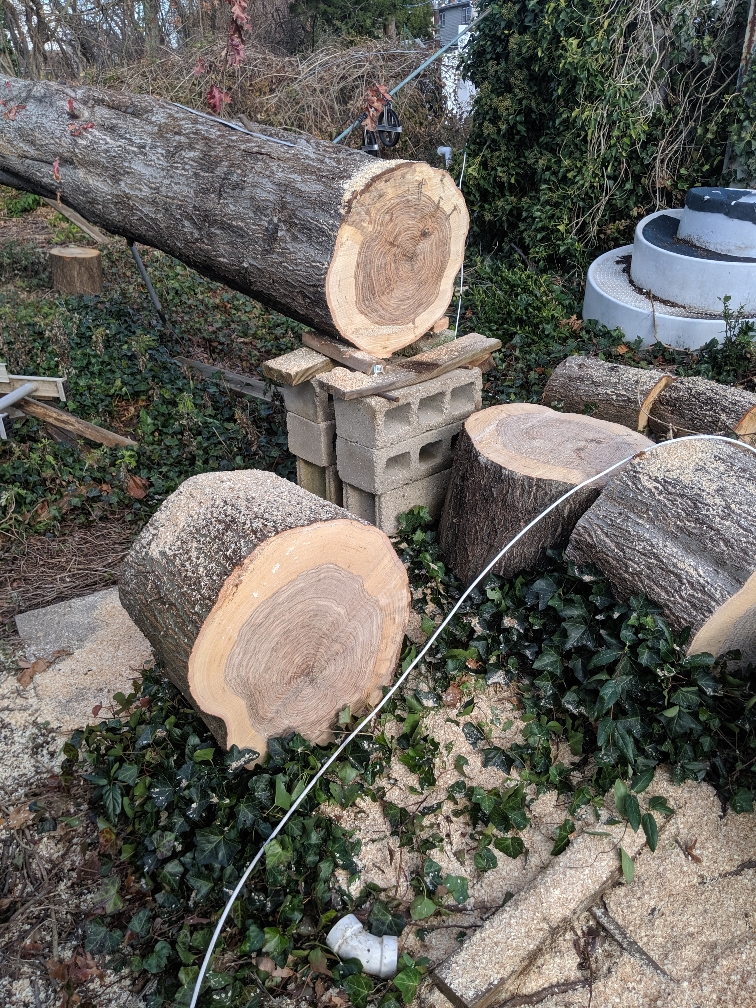
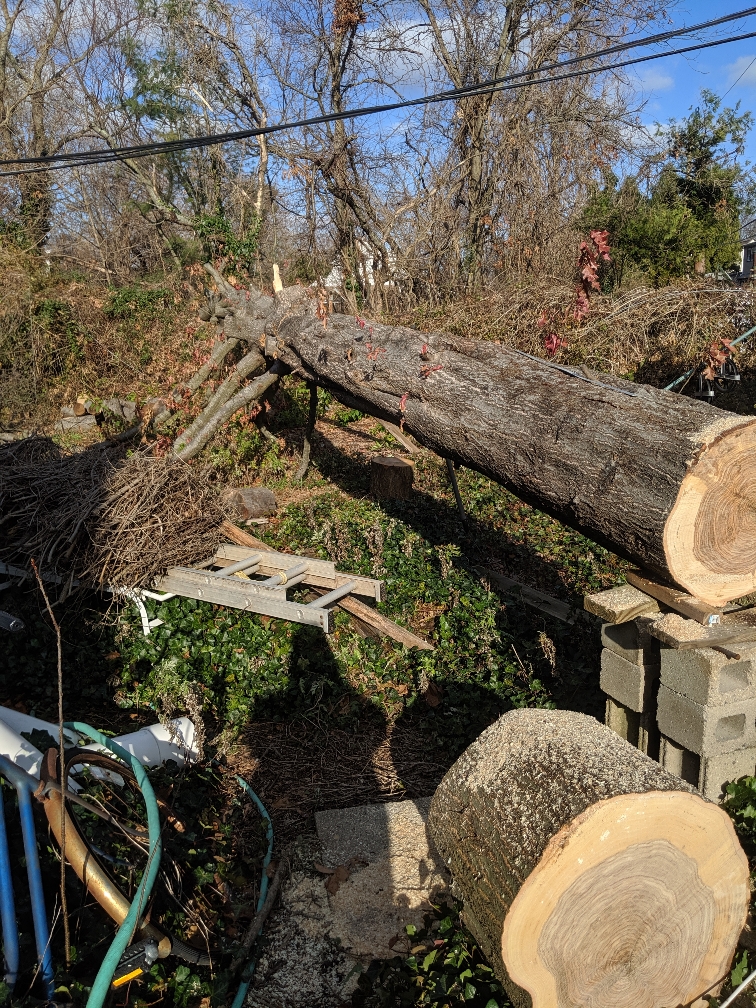
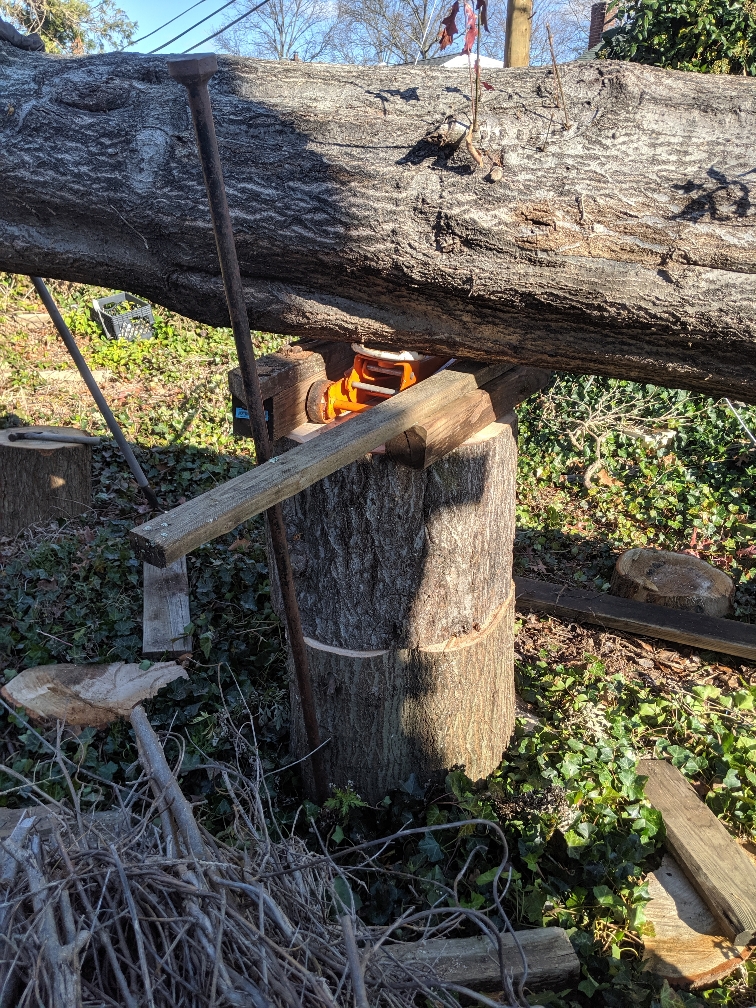
I was joking. They're plenty round and will roll nicely. I've actually moved bigger and heavier wood than this that I did not cut myself. Have a good utility trailer with ramps. Did you mean using big hunks of oak like this? [emoji16]

I'm using the floor jack and pinch bar to be sure I have enough weight off the bitter end of this thing before I make my next cut. Next cut is going to be 25", so it should take a couple hundred pounds off the end of this but I will wedge open the top of the cut and be ready to beat feet.
Not sure this 30+ year old floor jack is really designed for this, but it lifted my 62 Pontiac years ago. [emoji3]
Sent from my Pixel 3 XL using Tapatalk
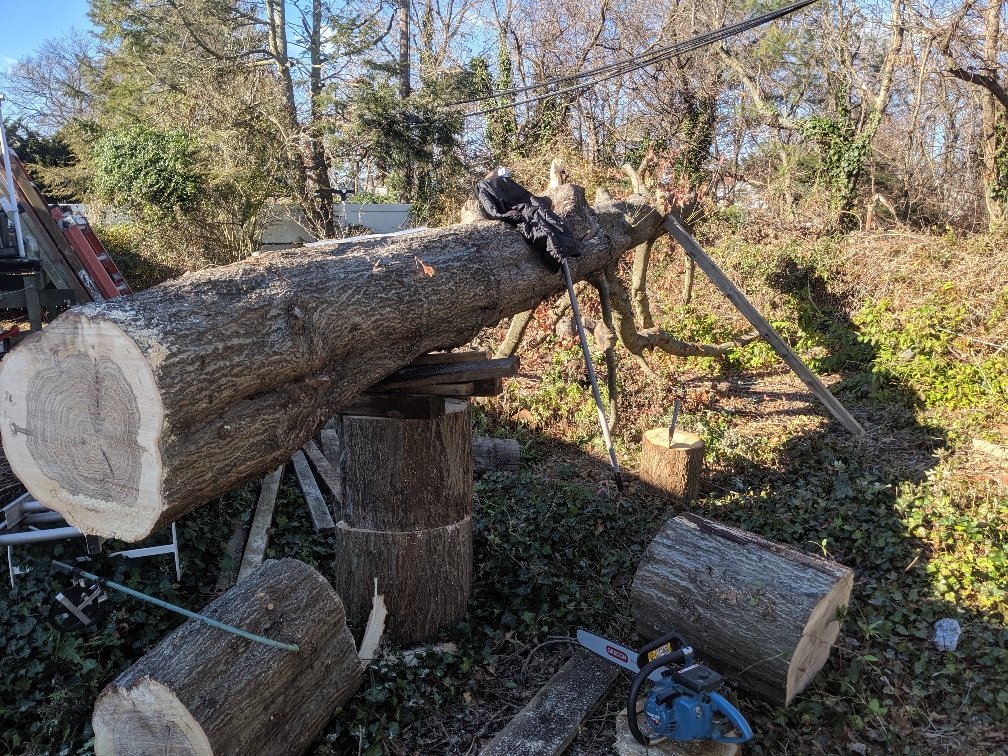
Also make sure your rakers are the right height, use a guide, do not file to much off. rakers should be checked every time you sharpen your chain, also flip the bar if possible, that will ensure the rails wear evenly, and sharpeners work well with practice, and can be used in the field.Enough reading here about chains/bars, sharpening to keep you busy for a week.
I've used the dremel tool attachments. You have to make sure they are setup proper to get the right profile on the cutter (hook and gullet). The diamond stones are the best.
The Pferd 2 in 1 file holders work decent. I've been a hand filer and just use a simple holder, sometimes just a file with a handle on the tang. Mounting the saw by the bar in a vice will help hold things steady.
For practice, take a sharpie and black out the cutting/filed surface. Then observe when you get all the marker off as you file the cutter. It should clean up to bare metal and have sharp edges. Read up on what a proper filed cutter looks like.
Bars you need the rails true and square, and the groove clean and not hogged out so the chain flops. They make tools to square the bar rails. A vertical belt sander works for really out of shape rails. A large flat file also works; put the bar in the vice and draw file it. You can check the groove with a stack of feeler gauges, check whole length, it should not be much wider than the chain gauge.
I never use full chisel chains on small saws, demands to much power, semi chisel chains stay sharper longer, without having to sharpen so much.Hmmm, got the new chain for the original 16" bar the other day, cleaned the bar and spooled up the new chain.
The new full chisel chain is way more aggressive than the existing (original?) Semi-chisel chain. Faster cuts for sure. Cut up several 4"-8" oak logs quick and clean. Way bigger chips.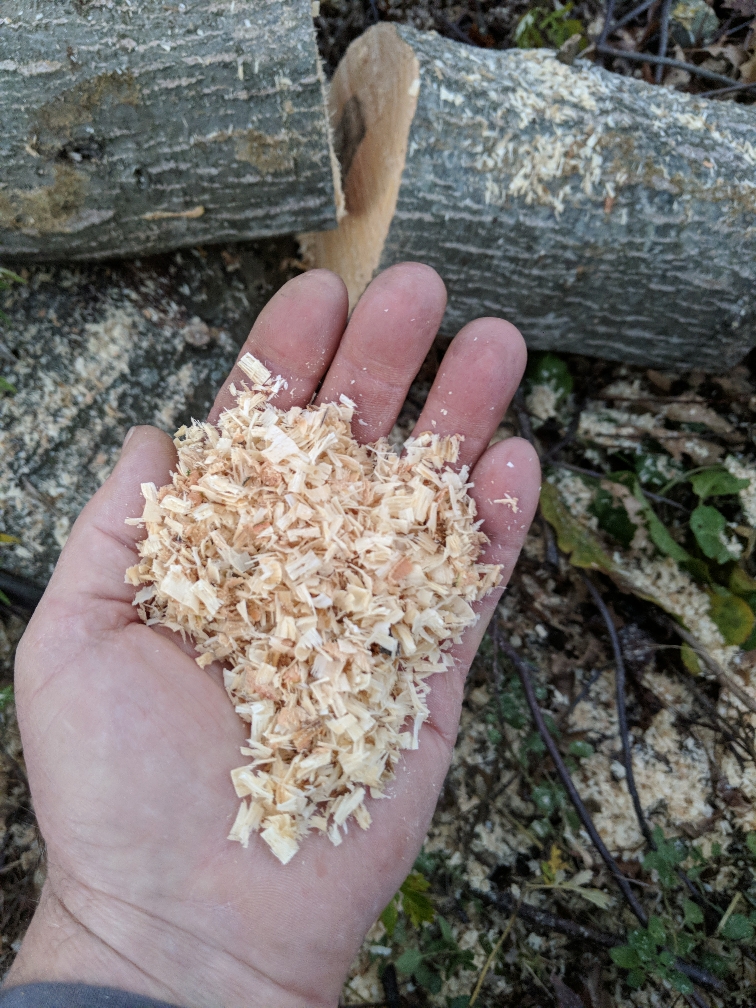
Even after the cuts, the chain was well lubricated.
However, a couple times cutting through an 8-in oak log the chain stopped if I put a little pressure on it. Bogged the motor slightly but the chain stopped and the motor kept going. I do not recall this happening with the semi-chisel chain that was sharpened by me...
I am now concerned that a full chisel blade on a 24-in bar (on order) is going to be problematic.
I am guessing that there may be some clutch maintenance in my future?
Sent from my Pixel 3 XL using Tapatalk
(Typo fix.. Edited new bar length 12/8/20)